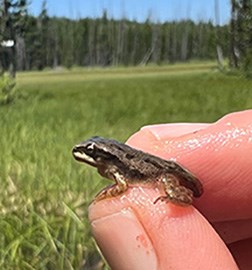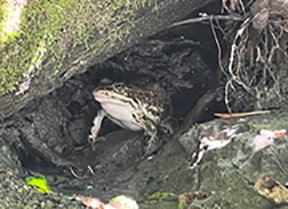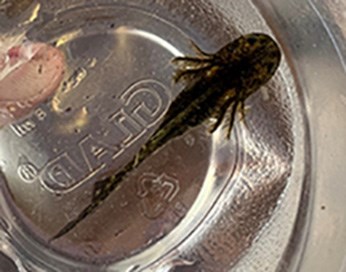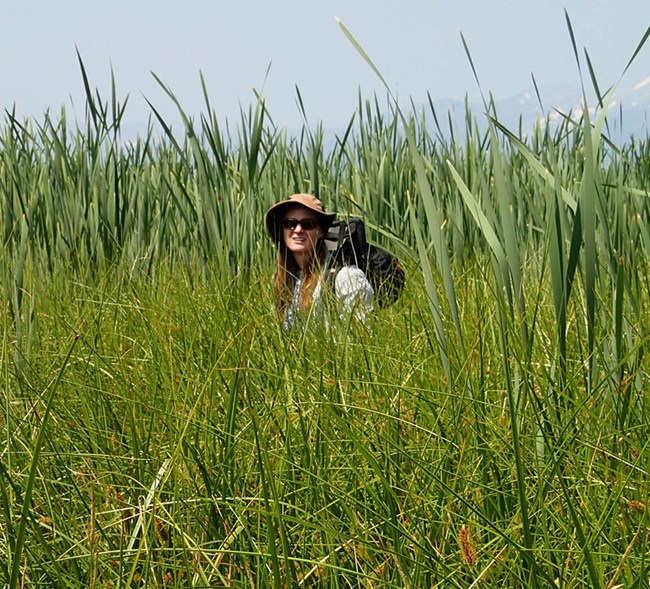



When beavers have recently worked on their dam, it can have so much fresh mud that we are afraid to cross it during our survey because the mud is still wet and slippery. If their activity has increased the wetland significantly, we occasionally change a few of our repeat photo points because the water was too deep for our chest waders (which means above waist high/chest high). In areas recently flooded by beaver activity, we will find all sorts of plants including dandelions and mushrooms submerged under the much deeper water that we are surveying. Beaver dams hold back water, spreading it across the floodplain and creating more breeding habitat for toads and other amphibians. The abundance of water allows vegetation to grow taller and lusher than a dry wetland. With more water the sedges grow taller and become a challenge because as the wetlands dry out the sedges become dry and sharp or ‘angry’ as we like to say. Visiting the wetlands in the drying season always reminds me of the well-known identification rhyme, “Sedges have edges…” and how sharp those edges can be. 

Mary Greenblatt, Amphibian Field Biology Technician Northern Rockies Conservation Cooperative Partner |
Last updated: March 16, 2023
